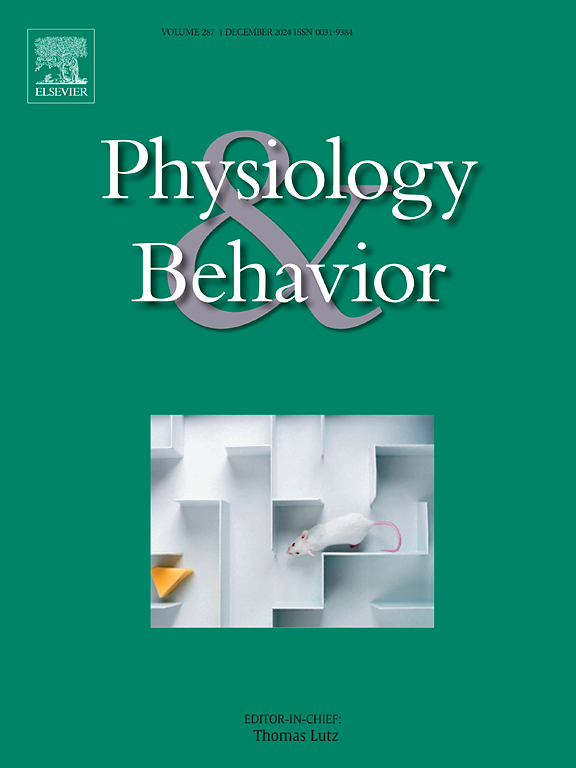Examining the impact of 28-week multicomponent and strength exercises on brain health, salivary stress, and mental well-being in frail older women: A controlled trial analysis
IF 2.4
3区 医学
Q2 BEHAVIORAL SCIENCES
引用次数: 0
Abstract
Background
In recent years, the efficacy of various physical exercise programs in enhancing functional fitness among frail older adults has gained recognition. However, limited research has concurrently explored the long-term effects of exercise on brain health, stress biomarkers, and mental well-being. This study aimed to investigate the impact of two distinct chair-based exercise programs on salivary stress hormones and psychological well-being in frail older women over a 28-week period.
Methods
A total of 140 individuals participated in the enrollment phase, with 84 eligible participants randomly assigned to three groups. Following the intervention, data from 60 participants were analyzed across the multicomponent exercise (MCE, n = 23), elastic band muscle-strength exercise (ESE, n=19), and non-exercise control (CG n=18) groups. Salivary biomarkers of alpha-amylase (α-AMY) Cortisol (COR), alpha-amylase/cortisol ratio, psychological indicators and physical frailty (PF) and functional fitness were assessed pre- and post-intervention.
Results
Salivary COR levels exhibited a significant time × group interaction, with a moderate increase in MCE, a small decrease in ESE, and a substantial increase in CGne. Salivary α-AMY levels varied significantly over time and by group, with a small decrease in both exercise groups and a moderate increase in CGne. The α-AMY /COR ratio also displayed a significant interaction effect. Additionally, significant improvements were observed in PF compound scores, general self-efficacy, attitudes toward aging, and reductions in perceived stress and depressive symptoms (p < 0.05).
Conclusions
Notably, the MCE program demonstrated greater benefits than ESE. The observed associations between changes in α-AMY levels, mental well-being, and functional fitness indicators contribute novel evidence on the psychophysiological adaptations to long-term exercise. Importantly, reductions in PF scores correlated with improvements in self-efficacy, attitudes toward aging, and handgrip strength, reinforcing the link between functional fitness, stress regulation, and psychological well-being. These findings emphasize the need for tailored exercise interventions to enhance both physiological resilience and mental health in frail older populations.

检查28周多成分和力量锻炼对虚弱老年妇女大脑健康、唾液压力和心理健康的影响:一项对照试验分析
背景:近年来,各种体育锻炼方案在增强体弱老年人功能健康方面的功效已得到认可。然而,有限的研究同时探索了运动对大脑健康、压力生物标志物和心理健康的长期影响。本研究旨在调查两种不同的椅子运动项目对体弱多病的老年妇女唾液应激激素和心理健康的影响,为期28周。方法:共有140人参与入组,其中84人随机分为三组。干预后,对60名参与者的数据进行了多成分运动(MCE, n = 23)、弹力带肌肉力量运动(ESE, n=19)和非运动对照组(CG n=18)的分析。评估干预前后唾液α-淀粉酶(α-AMY)、皮质醇(COR)、α-淀粉酶/皮质醇比值、心理指标、体质虚弱(PF)和功能适合度等生物标志物。结果:唾液COR水平表现出显著的时间 × 组相互作用,MCE中度升高,ESE小幅下降,CGne大幅升高。唾液α-AMY水平随时间和组间变化显著,两个运动组均略有下降,CGne略有增加。α-AMY /COR比值也表现出显著的互作效应。此外,在PF复合评分、一般自我效能、对衰老的态度以及感知压力和抑郁症状的减少方面均有显著改善(p < 0.05)。结论:值得注意的是,MCE计划比ESE表现出更大的益处。观察到α-AMY水平变化与心理健康和功能健康指标之间的关联,为长期运动的心理生理适应提供了新的证据。重要的是,PF分数的降低与自我效能、对衰老的态度和握力的改善相关,从而加强了功能健康、压力调节和心理健康之间的联系。这些研究结果强调,需要有针对性的运动干预,以提高身体虚弱的老年人的生理弹性和心理健康。
本文章由计算机程序翻译,如有差异,请以英文原文为准。
求助全文
约1分钟内获得全文
求助全文
来源期刊

Physiology & Behavior
医学-行为科学
CiteScore
5.70
自引率
3.40%
发文量
274
审稿时长
47 days
期刊介绍:
Physiology & Behavior is aimed at the causal physiological mechanisms of behavior and its modulation by environmental factors. The journal invites original reports in the broad area of behavioral and cognitive neuroscience, in which at least one variable is physiological and the primary emphasis and theoretical context are behavioral. The range of subjects includes behavioral neuroendocrinology, psychoneuroimmunology, learning and memory, ingestion, social behavior, and studies related to the mechanisms of psychopathology. Contemporary reviews and theoretical articles are welcomed and the Editors invite such proposals from interested authors.
 求助内容:
求助内容: 应助结果提醒方式:
应助结果提醒方式:


